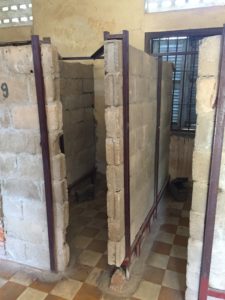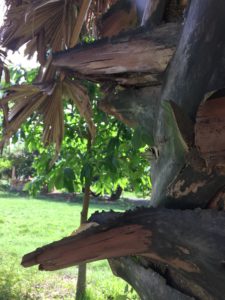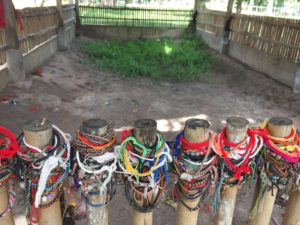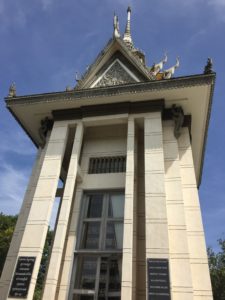Tuol Sleng & Killing Fields: Cambodia’s dark side
Angkor Wat is the main reason Cambodia made it to my list of countries to visit. I had read a little about the history and knew that the country had gained independence from the French in the 1950’s, been thorough a civil war, and had been deeply impacted by the Vietnam War and bombings by the US for over 4 years. Little did I know of the atrocities forced on the people of Cambodia, all in the name of creating a new world without western influence, religion and competition.
On reading more, I learnt about the Khmer Rouge, Pol Pot, Tuol Sleng (S21), the Killing Fields and the genocide committed by Cambodians against its own people. If you were a threat to the “Angkar”, you were a target. From 1975 to 1979, more than 2 million people died as a result of execution, starvation, sickness or inhumane labor. That’s 25% of Cambodia’s population at the time; to put it in perspective that is one in 4 Cambodian people. Think about your country and imagine if one in four people were killed.

“It’s better to kill an innocent than spare an enemy by mistake” – Pol Pot
The victims were primarily intellectuals, those who were educated and accomplished. People practicing as lawyers, doctors, teachers, and other professions were targeted. Almost all of those killed, lived in the cities and included men, women, children, and babies. It didn’t matter if you were old or sick. If you were a threat to the “Angkar”, you were a target. The mantra was, “To kill the grass you must also remove the root.” This meant that if you killed one person, it was best to kill everyone in that person’s family so no one would seek revenge.

What shocks me more is that justice was never served. For 20 plus years after the war, the people behind the Khmer Rouge were never tried nor did they have to pay a price for their crimes. Till this day, many who were part of the revolution and aided in the killings are walking the streets of Cambodia freely. Pol Pot continued to live with his family and grand children peacefully until he died in 1998.
Today, as I walk the corridors of what once used to be a school (now a museum, S-21) and the Killing fields, I can’t muster up the words to describe what happened here. My heart hurts and my brain cannot wrap around the fact that humanity is capable of such terror and barbarism. It shows how so much power behind one man with a skewed view of the world can cause so much pain and suffering to an entire nation. The Holocaust all over again! How is one able to move on with such emotional burden, how is one to live for the rest of their lives having been through something so horrendous? At the same time, the survivors are a testament to the strength and endurance that the human body and mind are capable of.




I can only pray for all the survivors and their families for they have lost so much. To them – May you find peace and gather the strength to forgive so you may not let the poison ruin your present. Let go of anger, revenge and wrath. Kill hate with love. Love is our only weapon of hope to bring peace in this world.
For those who want to visit Cambodia, don’t visit just the temples. Come to Phnom Penh, learn about the history and it’s people.
TIP: Read the book First They Killed My Father: A Daughter of Cambodia Remembers a book written by Loung Ung, a Cambodian author and survivor of the Pol Pot regime before or during your time in Cambodia.

Tuol Sleng Genocide Museum
Address: St 113, Phnom Penh
Hours: Open everyday from 7AM–5:30PM
Cost: $3 entry + $3 audio tour.
Killing Fields Museum of Cambodia
Hours: Open everyday from 7AM–5:30PM
Cost: $3 entry + $3 audio tour.
Logistics:
We took a tuk-tuk to tour in Phnom Penh to take us to the museum and then the Killing Fields and back. After bargaining, we agreed on $12. We left at 8:30 in the morning and it took us half the day to visit both sites. We reached the city in time for lunch.
The museum is in the city while the Killing Fields is about 35 mins away. TIP: The road is dusty and bumpy so make sure you buy a mask to wear on your ride. If dust is too much of a concern, you can travel in a bus for $15 per person. Ask the hotel/hostel you are staying at to make a booking, since the prices are the same everywhere. Also, there is no need to get a guide, as the museums have self guided audio tours. I highly recommend that you get the audio tours.
Visiting Tuol Sleng and the Killing Fields was pretty gut-wrenching. For a complete change of scenery, we headed to the beautiful Kampot. Here is why we fell in love with Kampot!
Other articles relating to Cambodia:

